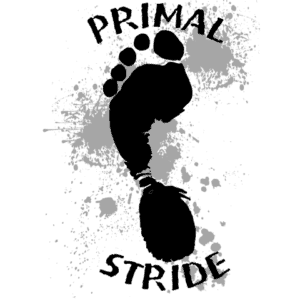Pull ups and dips yield fantastic results.
But can you build a well-rounded physique with pull ups and dips only?
In this article I’m going to show you:
- My [Personal] RESULTS with pull ups and dips.
- The advantages of pull ups and dips only – Why they should be part of your routine.
- Disadvantages of using only pull ups and dips – Why I stopped doing pull ups and dips.
- What to do if you can’t do pull ups or dips.
- The BEST exercises to add to your pull up and dips routine.
My [Personal] RESULTS Doing Pull ups and Dips Only:
Pull ups and dips are like deadlifts and squats for the upper body. They’ve been a staple of my calisthenics routine for years.
The great thing about training with pull ups and dips only is:
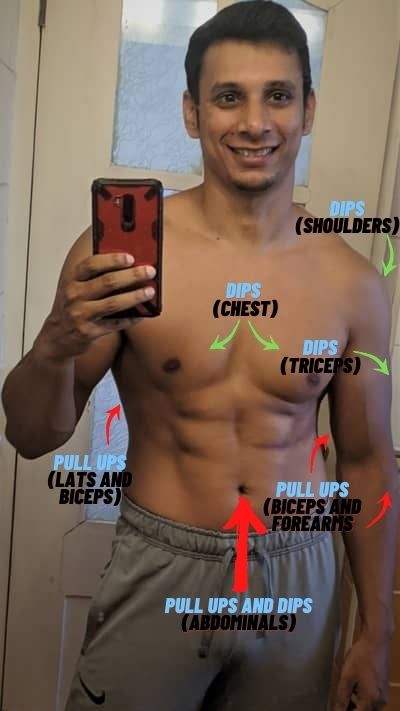
Pull ups and dips work opposing (antagonistic) muscle groups. Pull ups are a pulling movement that work the upper back, lats and biceps. While dips are a pushing movement that work the chest, shoulders and triceps. Pull ups and dips can be done together in a superset to minimize workout time.
These are my results doing weighted pull ups and dips only (for my upper body) on gymnastics rings for 8 months.
Note: During this routine I was doing weighted squats and deadlifts as well for my lower body.
Instead of weighted pull ups I used weighted chin ups in my routine. Weighted chin ups work the biceps harder while still having all the benefits of weighted pull ups.
I would occasionally throw in some push-ups or bodyweight rows into the mix every now and then, but 99 percent of my upper body training comprised of weighted pull ups and dips alone.
I followed this routine for the good part of 8 months because I had no time nor interest in working out.
I was quite pleased with the results; until I got injured. Here’s why I highly recommend keeping pull ups and dips as part of your workout routine and why you should not.
Advantages Of Pull Ups And Dips Only – Why You Should Do Them.
Pull ups and dips are known as “squats and deadlifts for the upper body”.
This is because pull ups and dips move your entire body through space using just your hands, while squats and deadlifts do the same using the legs.
In fact, pull ups, dips, squats and deadlifts are four universal movement patterns that can be used to build a solid physique.
1. Pull ups and dips move the entire body through space.
Moving the body through space using pull ups and dips requires the involvement of stabilizers throughout the upper body and the “core”.
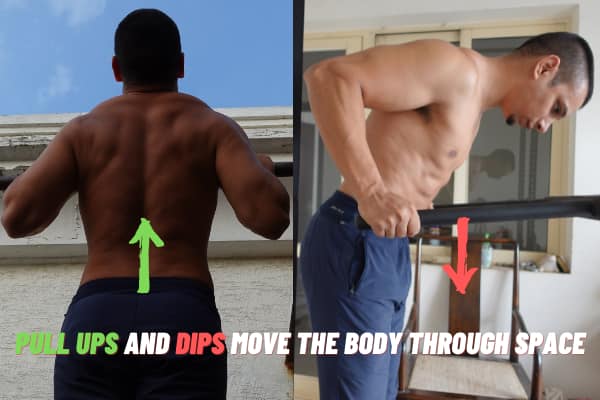
This leads to fewer weak links in the kinetic chain as the body stabilizes itself through these gravity defying movements.
In fact, pull ups can build the abdominal muscles just as well as regular ab exercises, but more on that later.
Note: I didn’t do a single abdominal exercise prior to, during or after my 8 months pull up and dips challenge.
2. Pull ups and dips build real world strength and have direct carryover to real life events.
Pull ups and dips are non-negotiable movements for rock climbers, martial artists, athletes and those in the military.
These two exercises are highly functional movements that can be used to navigate the real world.
Scaling walls, climbing rocks, trees and fences use muscles and movement patterns similar to those in pull ups and dips.
3. Weighted pull ups and dips build significant size and strength.
Weight can be added to pull ups and dips making them incredibly efficient at building muscular size and strength.
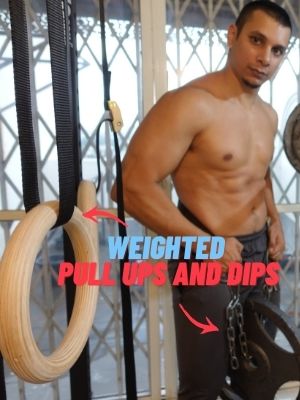
Adding weight also makes the progression with these exercises, simple, objective and provides infinite progression.
Weighted pull ups and dips can make their bodyweight counterparts a lot easier. When you take the weights off, similar movements like one arm pull ups become more achievable.
4. Pull ups and dips can be done on one piece of equipment – Gymnastics Rings.
Gymnasts are excellent at gracefully navigating their environment using pure upper body strength.
They incorporate pull ups and dips on gymnastics rings to build their phenomenal physiques.
If you are serious about building an impressive upper body, the ONLY piece of equipment you’ll need is a trusty pair of gymnastics rings for bodyweight calisthenics.
Gymnastic rings are an excellent piece of calisthenics equipment that perfectly complements this minimalist push-pull training style.
When performing pull ups on gymnastic rings it is possible to implement different grip-variations of pull ups and dips. When it comes to performing dips, Gymnastics rings can be a life saver.
Several gyms don’t keep dipping bars on their premises. Gymnastics rings allow you to train dips even without a set of dipping bars around.
The biggest problem with dipping bars is the spacing between them. Bars don’t come in standard dimensions and can be uncomfortable or injurious depending on their spacing and your shoulder width.
Gymnastics rings allow you to keep the rings as close to your body as required, by placing them directly under the shoulders.
Another feature of gymnastics rings is that they’re height adjustable. Adjusting ring height allows you to perform dead-stop pull ups and dips which are safer to perform when learning the movement.
If you aren’t strong enough to do dips, the bottom portion of the movement can be difficult to control and can be risky for the shoulder joint. 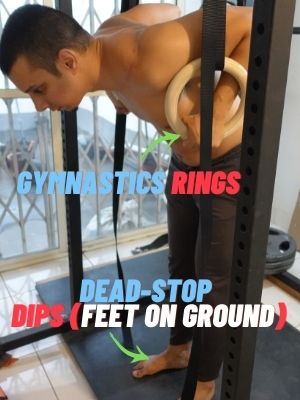
Dead stop dips on gymnastic rings minimize risk of injury. Placing the rings at a height where your feet reach the ground at the bottom allows you to fail the movement safely.
In case of failure; simply place your feet firmly on the ground. This transfers the load off your shoulders and onto your legs.
I highly recommend getting a pair of robust gymnastic rings. You cannot go wrong with a gym that fits in your backpack!
For indoor workouts, the GARAGE FIT GYMNASTICS RINGS, check them out HERE ON AMAZON.
For the outdoors the NAYOYA GYMNASTICS RINGS work well, check them out HERE ON AMAZON.
5. Pull ups and dips build exceptional grip strength.
The pull up can build finger strength, support grip strength as well as crushing strength based on the grip being used.
One of the best grip building exercises is a dead hang – hanging on rings/bar for as long as you can. Hanging on rings/bar this way is also great for the shoulders and decompresses the spine.
You can hang like this on bars, rings or even towels/cloth. Hanging on towels is excellent grip strength builder for martial arts like Judo and Brazilian Jiu-Jitsu.
You can also train the pull up with fat grips on pull up bars or gymnastic rings for added grip and forearm work.
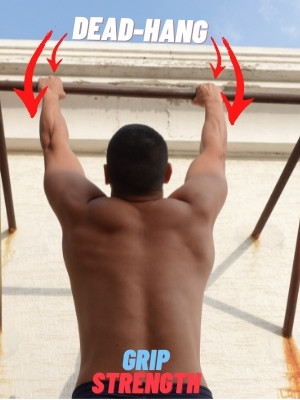
Pull ups also build your forearms since they target the brachialis and brachioradialis.
Dips on the other hand uses the wrist as a stabilizer, especially when performed on gymnastic rings.
6. Pull ups and dips can be done as a superset, thereby saving time.
Since pull ups and dips work antagonistic muscle groups, they can be done as a superset to save time. A superset is a set comprising two different exercises that work antagonistic muscle groups, done one after the other.
Since pull ups are an upper body pulling movement and dips are an upper body pushing movement, there is almost no overlap between the muscles being worked. This means you can finish your pull ups and immediately move onto dips; because pull ups don’t fatigue the muscles used in dips.
Doing two sets of pushing and pulling exercises one after the other reduces the time spent between sets, thereby reducing time spent working out.
Of course, this doesn’t mean that you should go into any set winded. I make sure to catch my breath for a couple of seconds before I begin the second exercise.
7. Pull ups and dips work the majority of the muscle groups in the upper body.
The combination of pull ups and dips works more than 90% of the muscles in the upper body. You might have certain lagging body parts like the side delts and the upper traps.
But these are minor gripes when looking at the overall development of a physique, considering the amount of time spent in the gym.
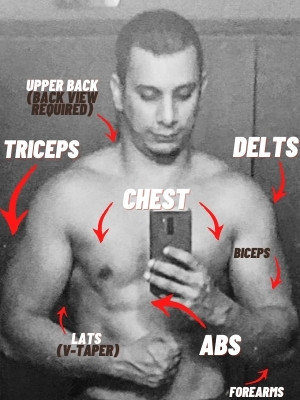
Pull ups work the traps, rhomboids, lats, abs, biceps, rear delts, brachialis and brachioradialis, while dips work the triceps, front delts and chest.
An exhausting weighted pull up and dip routine can be done in 20-30 minutes.
Novices and intermediates can get substantial upper body gains with an investment of only 1.5 hours in per week!
8. Pull ups and dips are an excellent core exercise.
The pull up and dips work the abdominal muscles to a great extent.
This is especially true performing the chin up with a hollow body hold.
As a matter of fact, pull ups and chin ups work the core as much as any direct abdominal work.
This negates the need for direct abdominal training. Or at the very least, it reduces the volume required to stimulate growth in the abdominal muscles.
Heavy loaded dips recruit the abdominal muscles just as well when done with a posterior pelvic tilt.
The overlap between pull ups and dips will build a strong, well-developed core.
The need for no additional ab-work, further reduces the amount of time spent working out.
9. Using pull ups and dips only is a minimalist way to workout.
Minimalists are specialists.
A routine with pull ups and dips alone allows for specialization.
Specializing in an exercise builds elite levels of muscle and strength. This is especially true for beginners.
The amount of strength that can be built as a novice is tremendous. Specializing on key movements will put you ahead of those that are distracted by many different exercises.
Disadvantages Of Performing Pull Ups And Dips Only
Reason #2 is why I quit doing pull ups and dips only for my upper body, it’s the reason why I started adding other movements to my upper body workout routine.
1. Performing pull ups and dips only can lead muscular imbalances.
Performing pull ups and dips alone can stimulate impressive growth in majority of the muscles of the upper body.
Unfortunately, there are still some muscles that don’t get stimulated enough when performing these exercises.
These muscles include the upper traps, the lateral head of the deltoid and especially the spinal erectors of the back.
Heavy emphasis on pull ups and dips alone lead to the rounded shoulders seen in several calisthenics athletes. This is because pull ups and dips work the internal rotators of the shoulder; the lats, the chest and the anterior delts.
These muscles pull the shoulders forward and inward thereby creating postural imbalances and could potentially lead to injury down the line.
2. Pull ups and dips are not beginner friendly exercises.
Most beginners will have a hard time doing enough reps on pull ups and dips. If you’re that person, like I was at one point, you’ll need to change your exercise selection.
Very few beginners realize that bodyweight rows and push ups can build just as impressive a physique as pull ups and dips, if not better.
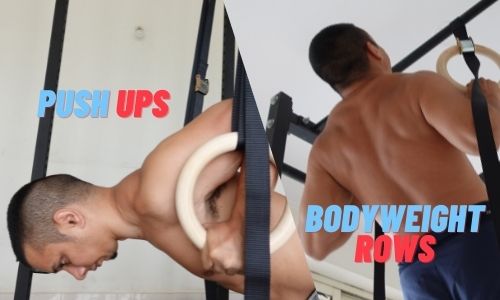
Bodyweight rows and push ups don’t look as cool as pull ups and dips, but these two foundational movements are stepping stones to unlocking pull ups and dips.
If you’re convinced that you want to try out a pull up and dips routine but can’t do pull ups or dips; bodyweight rows and push ups are the perfect combination for you.
Bodyweight rows and push ups can be done weighted as well and work as a horizontal pulling and pushing combo. You will be genuinely surprised at the level of development these two exercises can bring.
3. Doing pull ups and dips only ignores other important movement patterns.
An upper body routine with just pull ups and dips ignores other key movement patterns like the overhead press and a horizontal row.
Putting heavy objects overhead has been a primal movement since the dawn of mankind. The same can be said for some sort of horizontal rowing movement.
Adding these two exercises to a pull up and dip routine will make your upper body routine bulletproof.
4. Dips can lead to shoulder injuries.
It can be risky to perform dips.
As discussed above, it is easy to place the shoulder in a compromised position at the bottom of the dip.
This can be especially true when loading the dip with a weight that is hard to handle.
The bottom of a weighted dip can place the shoulder in hyper-extension under load. This can potentially be disastrous without a fail-safe at the bottom of the movement.
Gymnastics rings give you the ability to place your legs on the ground if you miss a rep.
Thereby allowing you to prevent the shoulder from going into dangerous territory at the bottom of the movement.
I got injured pushing the weights too high too fast on weighted dips. Had I taken my time with the exercise I would not have had to give it up due to injury.
If dips hurt your shoulders or sternum for any reason, stop doing them immediately. Dips, are an exercise that takes time and patience to work into.
Switch your focus to weighted push ups instead.
5. Pull ups and dips can be hard to micro-load accurately.
It can be hard to micro-load these 2 exercises because your own body weight is part of the load.
Our body weights fluctuate from day-to-day and throughout the day as well. Thus, micro-loading differences occur within the body itself.
The inability to micro-load accurately can hinder progress on bodyweight movements when compared to their barbell or machine counterparts.
Of course, the same argument can be made with barbell squats.
In the squat, you do end up squatting your bodyweight and the barbell during the movement.
But, minor fluctuations in weight can be easily handled by the lower body when compared to the upper body.
This makes progressing with micro loads relatively harder to track with pull ups and dips alone.
The BEST Calisthenics Exercises To Add To Your Pull Ups And Dips Routine
While pull ups and dips work about 90 percent of the muscles in your upper body, some muscles get stimulated less than others.
Doing only pull ups and dips also ignores key movement patterns.
Adding handstand push ups and bodyweight rows will bulletproof your upper body routine.
Bodyweight skull crushers are another favorite exercise of mine, which I’ve used to build my triceps with huge success.
In ending, I would like to warn you not to get married to exercises. Injury is part and parcel of training, while reducing potential injury is key to long term gains, injuries are inevitable.
If you are unable to do any of these movements due to injury, using barbells or machines alternatives for a while will allow your training to progress.
Conclusion:
Pull ups and dips alone will get you strong and jacked.
As a beginner, intermediate or advanced athlete, pull ups and dips can be the mainstay of your muscle and strength building program.
But they can lead to postural problems and injuries in the long run.
Working on shoulder mobility and strengthening the external rotators of the shoulder will improve joint health.
But to maximize muscle growth it is beneficial to add a few more exercises to your upper body routine.
Exercises like bodyweight skull crushers, bodyweight rows and handstand push ups are excellent additions to your upper body workout routine.
